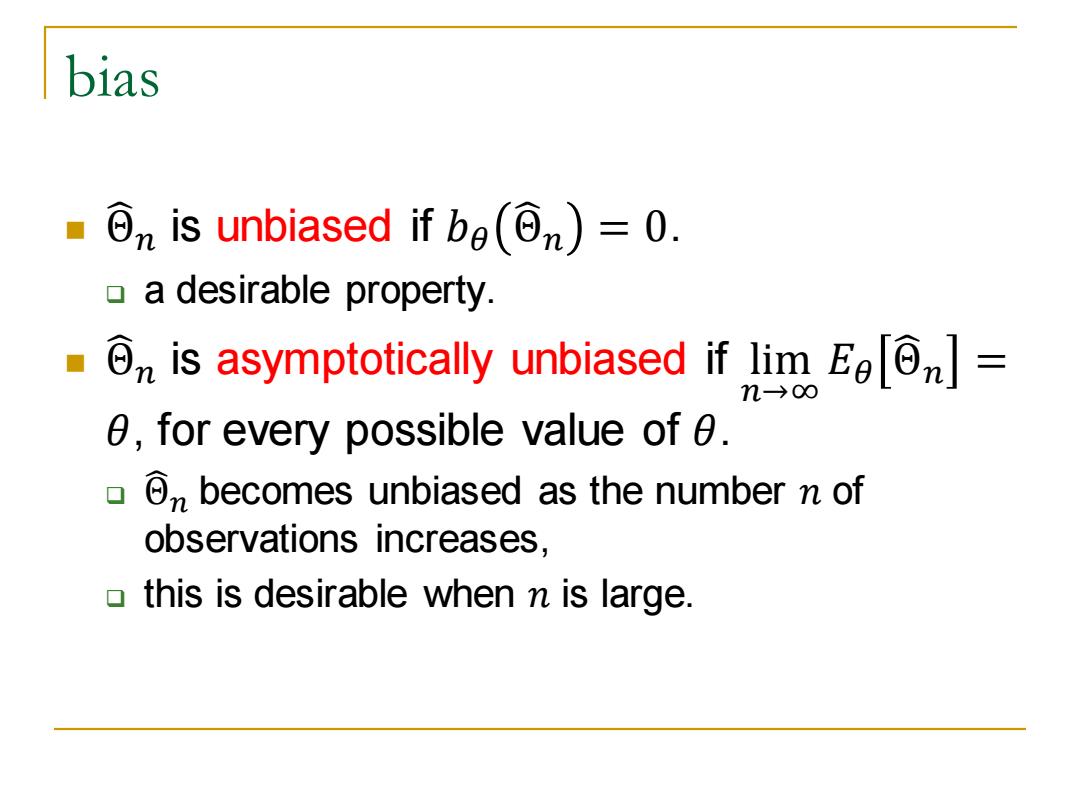
bias ■⑥n is unbiased if be(⑥n)=0. 0 a desirable property. ■⑥is asymptotically unbiased if lim E[⑥n]= n→o∞ θ,for every possible value of 0. o becomes unbiased as the number n of observations increases, 0 this is desirable when n is large
bias ◼ Θ 𝑛 is unbiased if 𝑏𝜃 Θ 𝑛 = 0. ❑ a desirable property. ◼ Θ 𝑛 is asymptotically unbiased if lim 𝑛→∞ 𝐸𝜃 Θ 𝑛 = 𝜃, for every possible value of 𝜃. ❑ Θ𝑛 becomes unbiased as the number 𝑛 of observations increases, ❑ this is desirable when 𝑛 is large
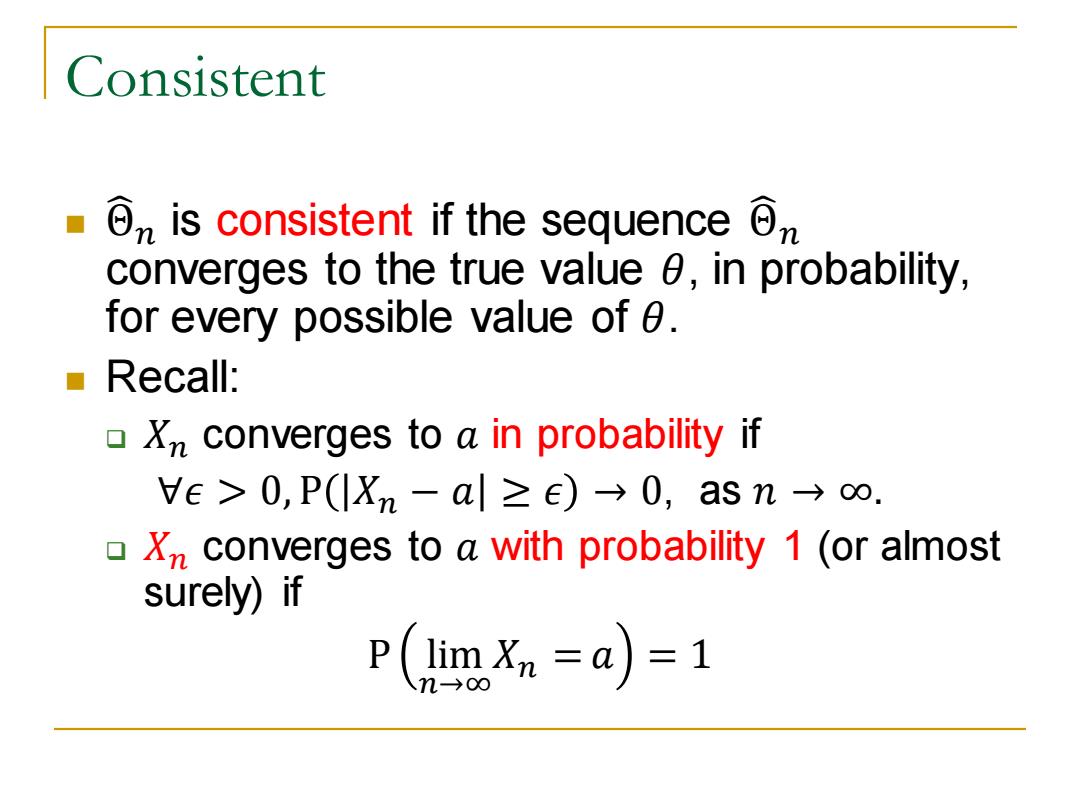
Consistent ⑥is consistent if the sequence⑧m converges to the true value 0,in probability, for every possible value of 0. Recall: Xn converges to a in probability if Ve>0,P(IXn-al≥e)→0,asno. Xnconverges to a with probability 1 (or almost surely)if P(QingXn=a)=1
Consistent ◼ Θ 𝑛 is consistent if the sequence Θ 𝑛 converges to the true value 𝜃, in probability, for every possible value of 𝜃. ◼ Recall: ❑ 𝑋𝑛 converges to 𝑎 in probability if ∀𝜖 > 0, P 𝑋𝑛 − 𝑎 ≥ 𝜖 → 0, as 𝑛 → ∞. ❑ 𝑋𝑛 converges to 𝑎 with probability 1 (or almost surely) if P lim 𝑛→∞ 𝑋𝑛 = 𝑎 = 1
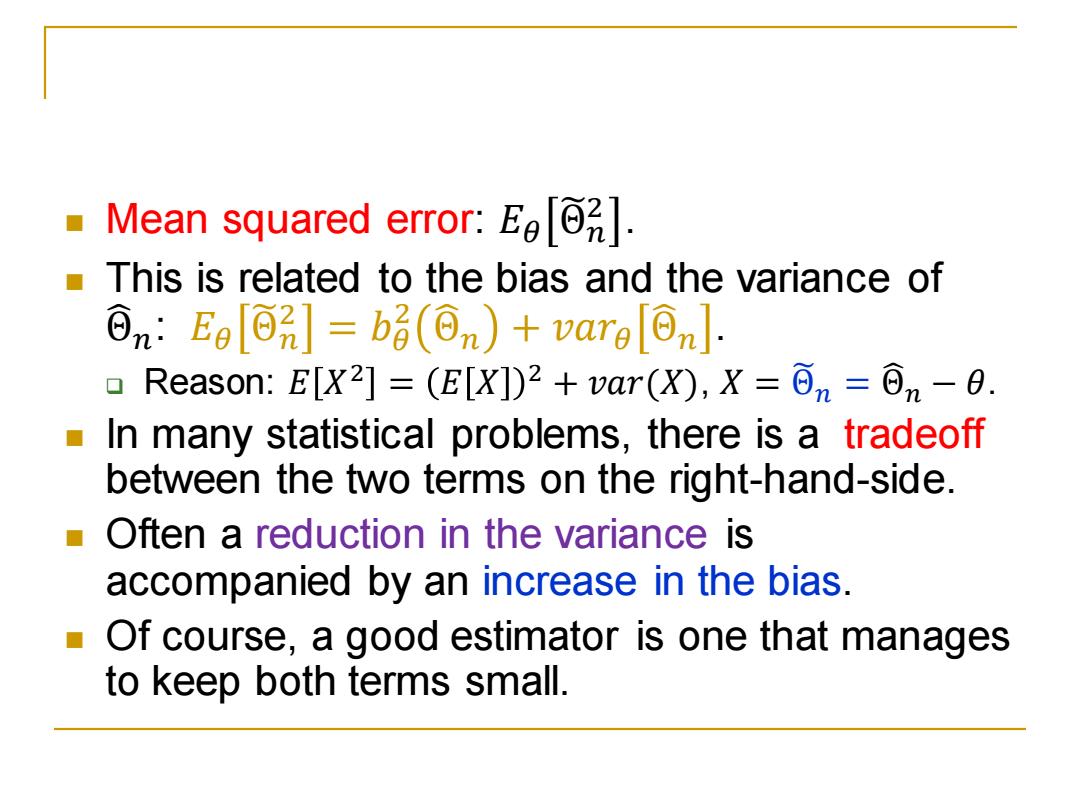
Mean squared error:E. This is related to the bias and the variance of ⑥n:Ea[o2]=b(⑥n)+vara[⑥n]: 口Reason:E[X2]=(E[X])2+var(X),X=δn=⑥n-0 In many statistical problems,there is a tradeoff between the two terms on the right-hand-side. Often a reduction in the variance is accompanied by an increase in the bias. ■( Of course,a good estimator is one that manages to keep both terms small
◼ Mean squared error: 𝐸𝜃 Θ෩𝑛 2 . ◼ This is related to the bias and the variance of Θ 𝑛: 𝐸𝜃 Θ෩𝑛 2 = 𝑏𝜃 2 Θ 𝑛 + 𝑣𝑎𝑟𝜃 Θ 𝑛 . ❑ Reason: 𝐸 𝑋 2 = 𝐸 𝑋 2 + 𝑣𝑎𝑟(𝑋), 𝑋 = Θ෩𝑛 = Θ𝑛 − 𝜃. ◼ In many statistical problems, there is a tradeoff between the two terms on the right-hand-side. ◼ Often a reduction in the variance is accompanied by an increase in the bias. ◼ Of course, a good estimator is one that manages to keep both terms small
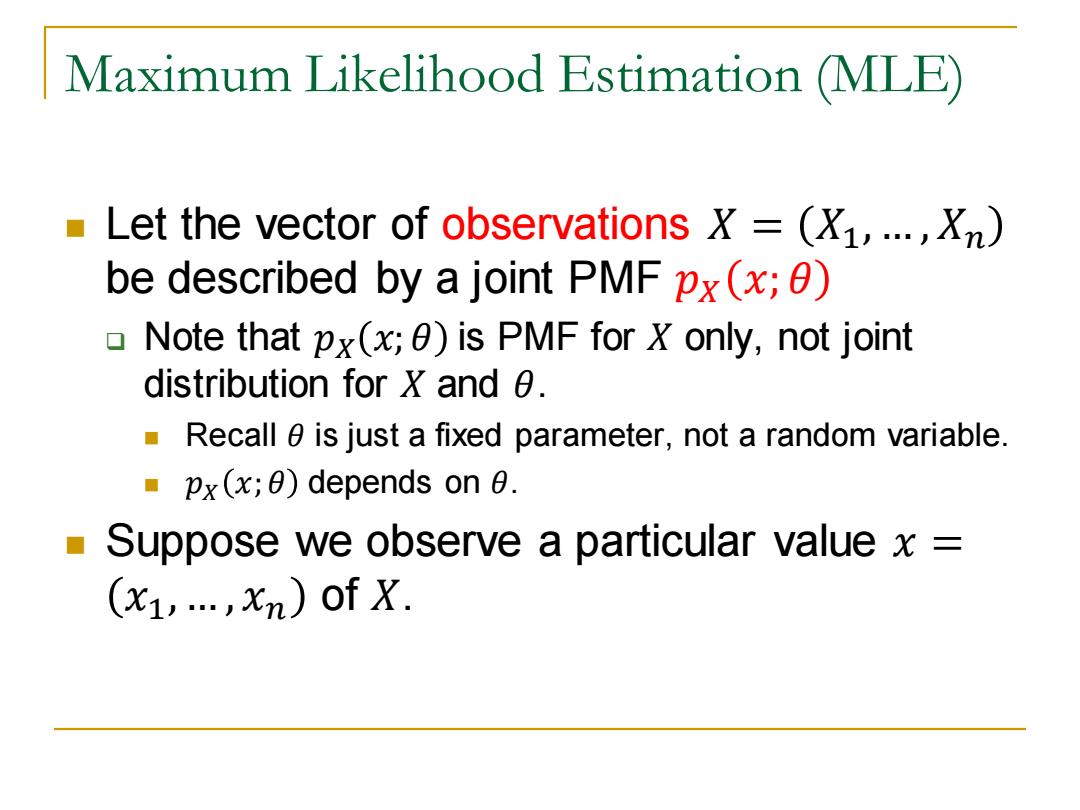
Maximum Likelihood Estimation (MLE) Let the vector of observations =(X1,...Xn) be described by a joint PMF px(x;0) Note that px(x;0)is PMF for X only,not joint distribution for X and 0. Recall 0 is just a fixed parameter,not a random variable. px(x;0)depends on 0. Suppose we observe a particular value x= (x1,…,xn)0fX
Maximum Likelihood Estimation (MLE) ◼ Let the vector of observations 𝑋 = 𝑋1,… , 𝑋𝑛 be described by a joint PMF 𝑝𝑋 𝑥; 𝜃 ❑ Note that 𝑝𝑋 𝑥; 𝜃 is PMF for 𝑋 only, not joint distribution for 𝑋 and 𝜃. ◼ Recall 𝜃 is just a fixed parameter, not a random variable. ◼ 𝑝𝑋 𝑥; 𝜃 depends on 𝜃. ◼ Suppose we observe a particular value 𝑥 = 𝑥1,… , 𝑥𝑛 of 𝑋
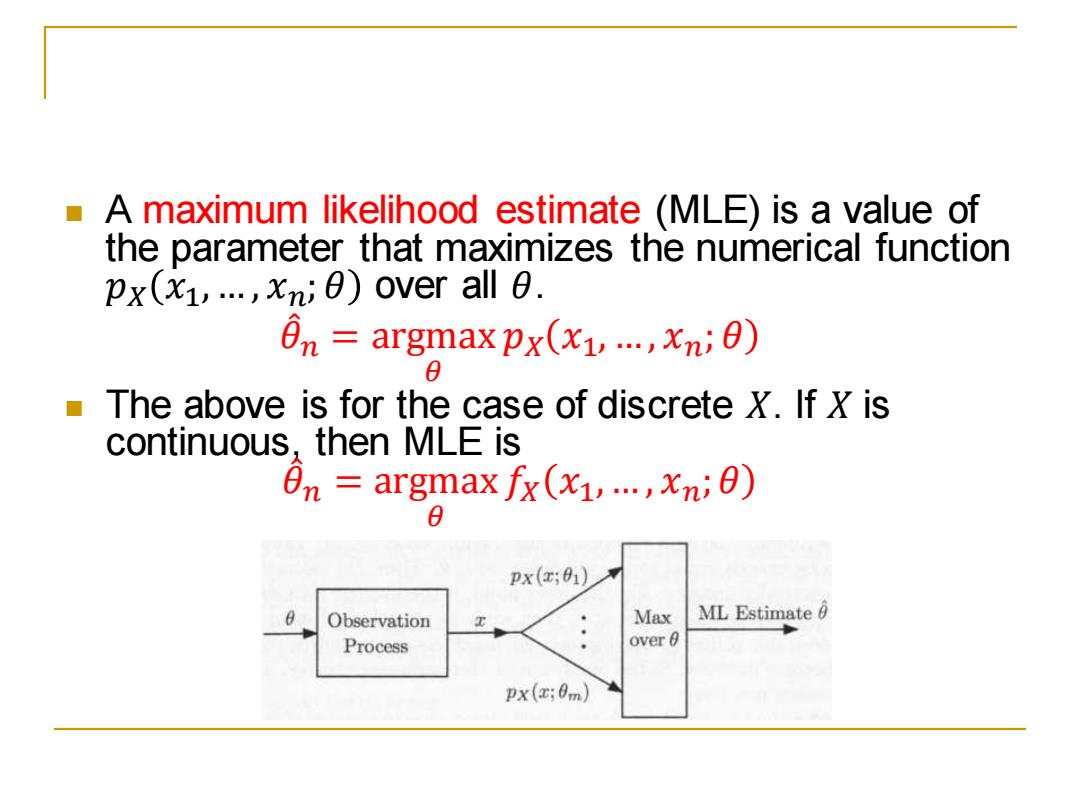
A maximum likelihood estimate (MLE)is a value of the parameter that maximizes the numerical function px(x1,...,xn;e)over all 0. On argmax px(x1..,xni0) 8 The above is for the case of discrete X.If X is continuous,then MLE is en =argmax fx(x1,...,xni) 0 px(x;01) Observation Max ML Estimate 6 Process over 0 px(x;0m)
◼ A maximum likelihood estimate (MLE) is a value of the parameter that maximizes the numerical function 𝑝𝑋 𝑥1,… , 𝑥𝑛; 𝜃 over all 𝜃. 𝜃መ 𝑛 = argmax 𝜃 𝑝𝑋 𝑥1, …, 𝑥𝑛; 𝜃 ◼ The above is for the case of discrete 𝑋. If 𝑋 is continuous, then MLE is 𝜃መ 𝑛 = argmax 𝜃 𝑓𝑋 𝑥1,… , 𝑥𝑛;𝜃